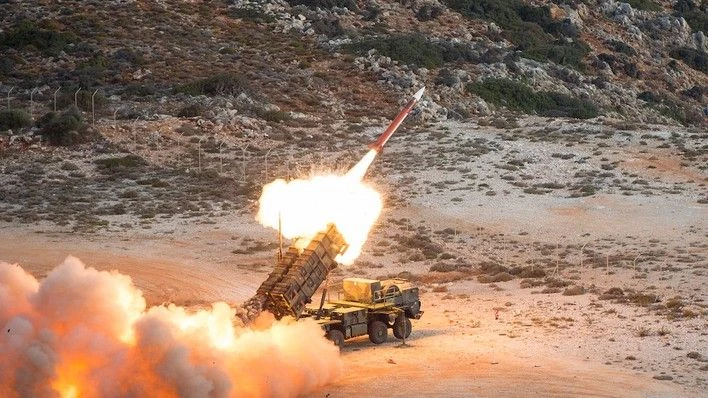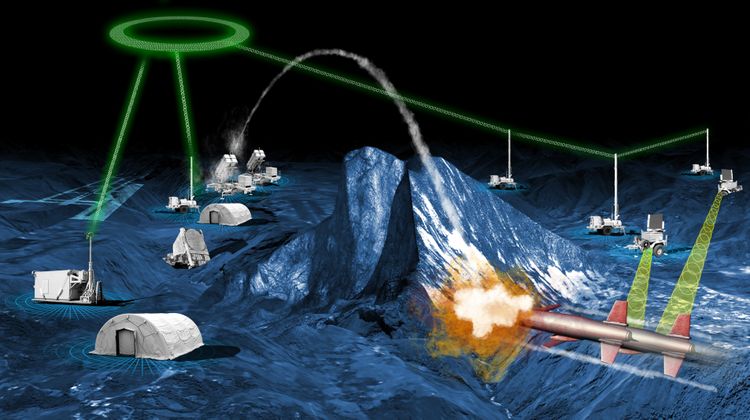Northrop Grumman: IBCS will be able to manage integrated fires [INTERVIEW]

So at some point in time, we want those Polish companies to have that capability so that they not only can sustain IBCS, but also the developments of integration for the new sensors - as Tarik Reyes, Vice President, for the Missile Defence and Protective Systems (MDPS) division, Northrop Grumman told Defence24.com in an interview, adding: „The CAMM provided by MBDA is one of those [shooters - ed.] that certainly can be integrated with IBCS”.
Maksymilian Dura: We have heard that Northrop Grumman has engaged with MBDA, to integrate the CAMM missile system into IBCS. Since a long time CAMM is offered in the Polish Narew SHORAD project. Could then CAMM be a part of Polish Narew SHORAD system, assuming that Narew is integrated into IBCS?
Tarik Reyes, Vice President, for the Missile Defence and Protective Systems (MDPS) division, Northrop Grumman: MBDA provides very good effectors today, and through a Modular and Open Systems Approach (MOSA) IBCS is designed and constructed to integrate a number of sensors and shooters. The CAMM provided by MBDA is one of those that certainly can be integrated with IBCS.
According to the earlier information US Army has been planning to down-select some of the contenders in the LTAMDS project, which is to choose the future radar for the Patriot. The same sensor is also planned for the second phase of Polish Wisla project. Can you tell us whether the down-selection did already take place and whether has Northrop Grumman been down-selected?
One important point is the open architecture approach of IBCS enables a component-based acquisition.
What I can tell you is that Northrop Grumman is one of four companies down-selected for the first phase of the Army’s Lower Tier Air and Missile Defense Sensor (LTAMDS) acquisition programme. Our offer is based on the technology of 360-degree AESA G/ATOR radar, built on GaN technology and it will be fully integrated with IBCS right from the beginning.
In Poland there is a discussion on the scope of the IBCS use within the integrated Air and Missile Defence. Can we use IBCS down from the platoon, through the battalion level, to the brigade command?
Yes, IBCS is designed to serve as the command and control for all of Air and Missile Defense commands from platoon to a theatre area defence command. The IBCS software-defined, network-enabled architecture is capable of being extended to enable integration across multi-domains. It can be effectively used for Narew and Wisła and serve as the centerpiece of Poland’s Air and Missile Defence modernisation programme.
How about connecting with other C2 systems, including the Polish-developed, existing or planned command and control systems?
From a technical perspective, IBCS already connects with other C2 systems for the US programme. IBCS can integrate not only sensors and shooters, and with additional engineering, is capable of multi-domain command and control – integrating Land, Maritime, Air, Space, and Cyber domains.
IBCS is certainly extensible beyond the land-based air and missile defence; IBCS can integrate assets from multiple domains. Again, the application of IBCS is dependent on the decisions of the US government.
What is the way additional elements can be integrated into IBCS?
IBCS is an open architecture system, using the Modular Open Systems Approach (MOSA). So when we are talking about the sensors and effectors, or other C2 systems, we refer to creation of the IBCS A-Kits and B-Kits. The manufacturer develops the A-Kit for the radar, or the effector, or even the command and control system, while Northrop Grumman would develop the B-Kit side. Those two will come together for the integration.
I would like to highlight that you do not have to redesign the entire system. What we need is to develop those interface points, which are the A- and B-Kits.

How about integrating the elements that are much smaller than Wisła or Narew, the very short range air defence systems? Some of them have already been fielded, like the Poprad VSHORAD systems, other can even constitute the man portable systems for the dismounted soldiers. To what extent IBCS can work with the mobile systems, often used in direct contact with the enemy?
The IBCS architecture is designed to be extensible to enable a highly accurate air picture to be distributed to VSHORAD systems and man-portable air defense teams. When we are talking about light, man-portable systems for the dismounted soldiers, small squad level-systems, we have shown using Northrop Grumman’s own internal investment that the IBCS architecture can share information to a hand-held terminal or to other systems that are out there.
Poland will be developing its own defense systems well into the future. Will it be possible to build the integration systems for the new Polish capabilities in the Polish industry, or will the Poland need to purchase them from the Northrop Grumman?
Northrop Grumman has engaged with PGZ to transfer technology, and part of that technology transfer is to train Polish industry to develop that integration capability. The way we envision it is that, for example the Polish sensors are developed here in Poland and we will provide technical assistance to show Polish manufacturers how to develop the interface points.
Part of the offset is to train Polish industry on how to develop that A-kit and B-kit integration. In Phase one, as a component of the offset for Polish industry, Northrop Grumman engaged in teaching the overall architecture of the systems and on general rules of systems development. So, Northrop Grumman in Phase one is responsible for the offset around the IAMD architecture. In the second phase, we will deliver integration capability and transfer technology on how to build the integration interfaces. That is when the Polish radars will be integrated into the system.
So at some point in time, we want those Polish companies to have that capability so that they not only can sustain IBCS, but also the developments of integration for the new sensors. We are aware that as the threat will change and become more complex, the sensors that are effective today will not necessarily always be effective tomorrow. So we expect the new developments of sensors and effectors here in Poland, and the Polish industry shall have the capability to integrate them with IBCS, through US government approval.
Have you identified and engaged with Polish companies that would take part in developing those integration interfaces?
We have already set up business agreements with some Polish companies. Part of the offset is delivering the manufacturing capabilities to our Polish partners.
Let me make a more general question. What is the future of IBCS in the US Army? We know that system is not yet operational, and it will have to be modified, changed in the future? What is the way the system will progress?
IBCS is the cornerstone of the US Army’s Integrated Air and Missile Defense (IAMD) modernisation strategy. The programme has continued to make good progress in development and testing to include recent soldier testing and participation in joint services exercise. IBCS was designed from the beginning to embrace incorporating new advances in hardware and software without the massive investment and time needed we see today in legacy systems. As IAMD is inherently multi-domain, we believe IBCS can be the basis of multi-domain battle management. Based on the ability we have today we think that it will be able to manage integrated fires – both precision fires, and the air defence. So both the offense and defence systems could be managed in an integrated way, using the common command and control system.
Northrop Grumman was just awarded $289 million to continue development toward fielding of IBCS. The programme is constantly working to ensure system capabilities can provide critical protection against an evolving air and missile threat and the award enables IBCS to continue to keep pace. The award also demonstrates the Army’s confidence and commitment to the programme and underscores the priority to modernise IAMD.
How about the Over-The-Horizon targeting?
Three years ago IBCS already demonstrated the ability to maximise the kinematic capabilities of our interceptors by extending intercepts well beyond the horizon. During a past flight test, we demonstrated the ability to fire a PAC-3 missile at a surrogate cruise missile target that was masked from a deployed Patriot radar. Two forward deployed Sentinel radars could see the target. IBCS used the data from the two Sentinels to build a track accurate enough to engage with a PAC-3 missile. We fired the PAC-3 missile, guided it over a mountain and successfully intercepted the target.
Recently, we had a Soldier Checkout Event, SCOE 4.0, where we demonstrated the functionality of the IBCS network over a large area approximating the distance between Stockholm and Athens, for example. During that test we were able to stress the system and operate it in a very intense environment. Even as we plugged some nodes in and out, it was able to develop solutions and to demonstrate that it was functioning as it should.
US Navy has developed its own system for Surface-based Air and Missile Defence Over-The-Horizon targeting. Do you cooperate with the Navy on the systems integration including OTH engagements?
In 2011, we conducted a demonstration with the US Navy’s Cooperative Engagement Capability network with US Army, Navy, Air Force and Marine Corps participants to form a single integrated air picture. Recent soldier checkout events show how IBCS provides a significantly improved air picture and contributes to the joint Link 16 network. The open architecture and next-generation capabilities of IBCS provides an excellent foundation for sharing improved threat tracking and targeting information across services.
Technically we can connect between the various systems – virtually there are no limits, subject to US Government approvals. Northrop Grumman has a long history of successfully delivering innovative solutions to the Armed Forces of the United States and to the Department of Defense, and we are ready to take further steps in that direction.
Thank you for the conversation.

WIDEO: Defence24 Days 2025: Premier Defence & Security Conference in CEE